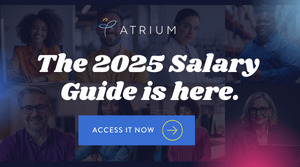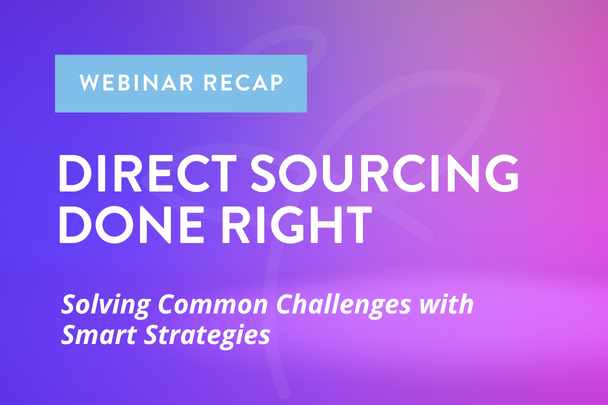Some people make quick decisions and seem completely confident in doing so. Others need more time to make a decision and may ask for several options and consulting opinions before landing on a final selection. When looking to add HR technology to your talent acquisition ecosystem, including contingent workforce management tools, finding the right solution can sometimes be complicated. Whether you make choices decisively, impulsively, analytically, or through consensus, knowing what questions to ask is an excellent way to start the buying journey.
Starting the buying journey
Technology can enhance your capabilities, drive efficiency in your processes, accelerate results, and deliver better experiences for the people who work for you and those you serve. Before you spend any time on slick presentations or HR tech demos, however, you need answers to key questions. At the start of the buying journey, the most critical question to answer is: What problem are you trying to solve?
Define the problem first
To solve your problem, you must first define it. For example:
- Can’t easily search for candidates who apply for one role but may be a good fit for future roles
- Too few applicants
- Not enough diverse hires
- Application process is too long
- Costs to engage contingent labor are too high
When you understand the problem to be solved, it is easier to identify a realistic goal, such as improving your user experience, automating your application process, or increasing diversity hires by 20%. You may also find that HR tech is not the magic bullet needed to solve the problem. Before jumping to a tech solution, analyze the current situation, because technology can be an unfortunate scapegoat in the people, process, and technology triumvirate. A lack of HR tech or the wrong HR tech is an easy thing to blame when dealing with talent acquisition issues, so take a step back to examine how a process works, the role of technology in the process, and what people do to address the problem today. Based on those observations, you may discover that rather than implementing a different technology, you may need to tweak the process first. Know that HR tech, no matter how powerful, cannot necessarily fix a broken process.
After adding clarity to problem definition, it is easier to identify technology requirements. Engage in a bit of creative thinking. You may discover an HR tech solution that doesn’t necessarily fit the generally accepted mold. Be an informed buyer. You may be looking for an ATS but may find one that also does CRM. Be very strategic in your search.
Questions that can simplify HR tech selection
Some questions will be very specific to your organization; others apply universally. To help set the parameters for your HR tech selection, address these basic questions up front:
What is the budget? Having a dollar figure in mind will help guide your search. It can also help refine your goal in terms of anticipated return on investment. Be prepared to ask vendors about the total cost (which should include costs associated with training and post-purchase tech support). Is it better to acquire or license? Is there an opportunity to freely use HR tech supplied by a partner, e.g., an MSP partner tasked with managing your contingent workforce?
Who are the end users and how are they impacted by this problem? Keep in mind that there may be different levels of users. For example, your main users may be recruiters, but the solution will also be used by candidates. Each set of users will have different needs. Ensure all end user voices are heard.
Who should be involved in the buying process? First, determine which functions will use the technology. Then do the research to ensure you address the needs of each distinct user group. For example, include representatives of:
-
- multiple departments (HR, Procurement, IT)
- external partners (like an MSP), if appropriate
- end users
How will you handle the need for change management? Users who are already comfortable with technology solutions and those who have made similar transitions in the past can help fuel adoption of new tech. Inclusion in the search process by different end users and designated representatives of related functions offers the added benefit of identifying champions and change leaders who can help ensure a successful implementation.
What level of support will be needed? Will users be self-sufficient or will they need some hand holding? What are the options for post-launch support? Can you engage “superusers” to help with adoption?
What are your long-term goals? Is it better to start small with a single point solution or look for a comprehensive system that offers broad functionality? That depends on the requirements as well as your long-term goals for your overall tech ecosystem. A well-established, big vendor solution may entail a purchase that you will need to implement and support on your own or through third-party agents. Are you equipped to handle a do-it-yourself solution, including integrations? You might want a smaller solution from a smaller company that will provide more support as you not only learn how to use the HR tech but take advantage of any available beyond-the-basics capabilities. Whatever you choose, start with the long-term vision and work backwards.
Where to get answers
How do you navigate the complexity of the HR tech landscape? Preliminary research should include relevant blogs, webinars, and podcasts to raise your familiarity with the possibilities. Look to industry experts, such as Staffing Industry Analysts, to provide generalized guidance and case study references. Then be sure to use your own network, reaching out to people you know to find out what kind of HR tech solutions they use.
What are the biggest pitfalls to avoid?
Entire books have been written about all the ways technology projects can fail. We’ve covered a few already, including the need to clearly define the problem; address the needs of actual tech end users; plan for change management, and more. Other pitfalls to avoid:
Shiny penny syndrome. Lots of HR tech solutions try to do it all. They offer extra bells and whistles, such as AI assessment or a sophisticated recruitment marketing platform, when all you want is an ATS. Keep things simple. Don’t try to solve problems that haven’t surfaced. Focus on your main goal.
Oversimplifying integration. Studies have shown that upwards of 70% of tech projects fail due to integration issues. It is a challenge that neither you nor your tech vendors should ever underestimate. When integrations are not carefully planned and executed, they can lead to significant losses of time, money, and acceptance by users. Make sure integrations will really work before finalizing a buying decision.
When you are ready to move forward with HR tech selection
For many, an HR tech purchase is prompted by a certain degree of desperation. If you are “McGyvering” solutions, possibly trying to adapt your HRIS to handle vendor management or candidate engagement, then it is past time to find a better way. When manual workarounds no longer work, and you’ve maximized your use of makeshift solutions, it’s time to start registering for those HR tech webinars.
Before you decide what HR tech to add to your talent ecosystem, arm yourself with the knowledge and insights to ensure success. Get to know the Atrium team and Atrium’s approach to HR tech. And watch this space for additional insights in the future on how to find an HR tech solution that will significantly and efficiently enhance your ability to attract and engage the talent you need to grow.











